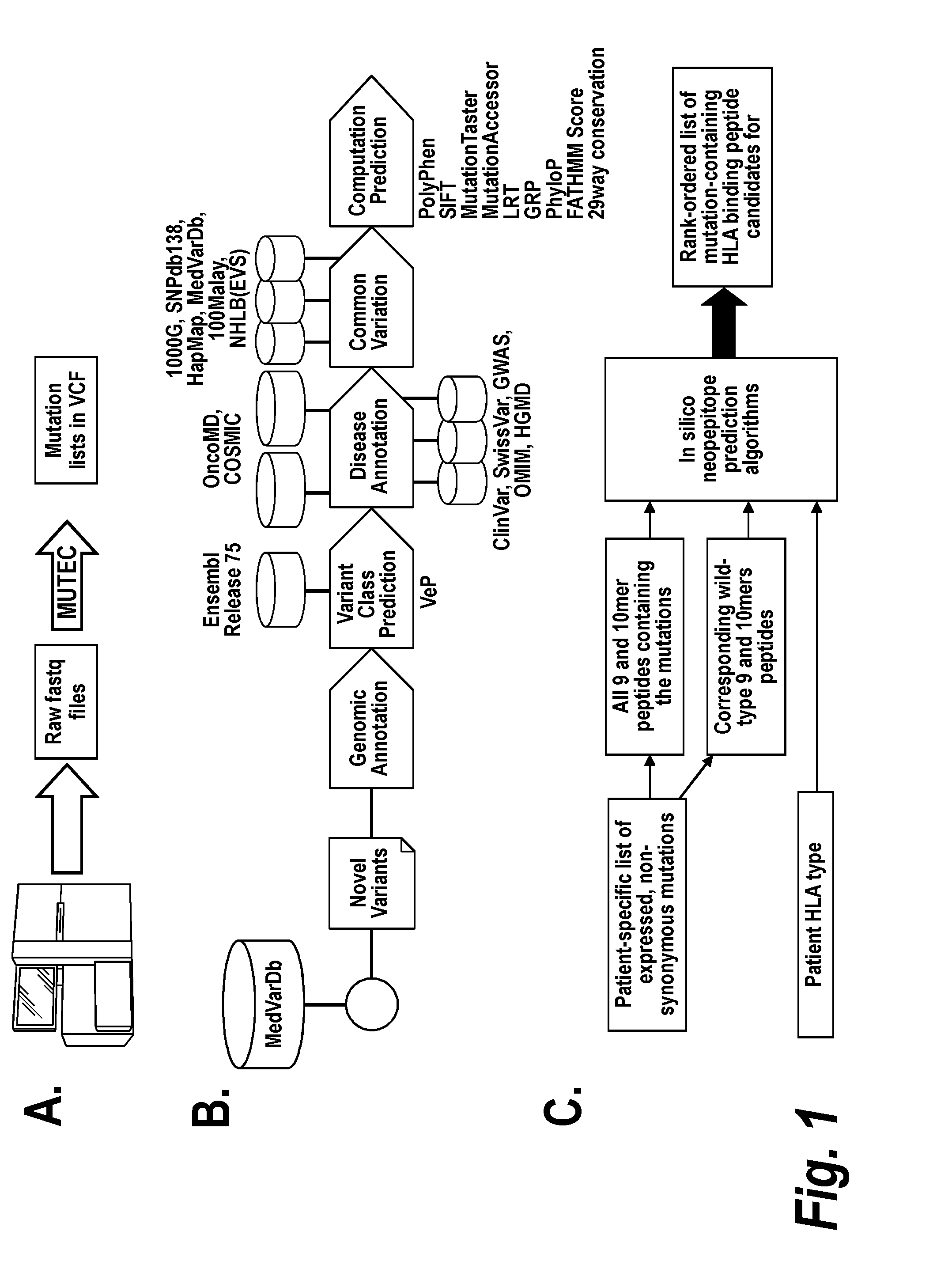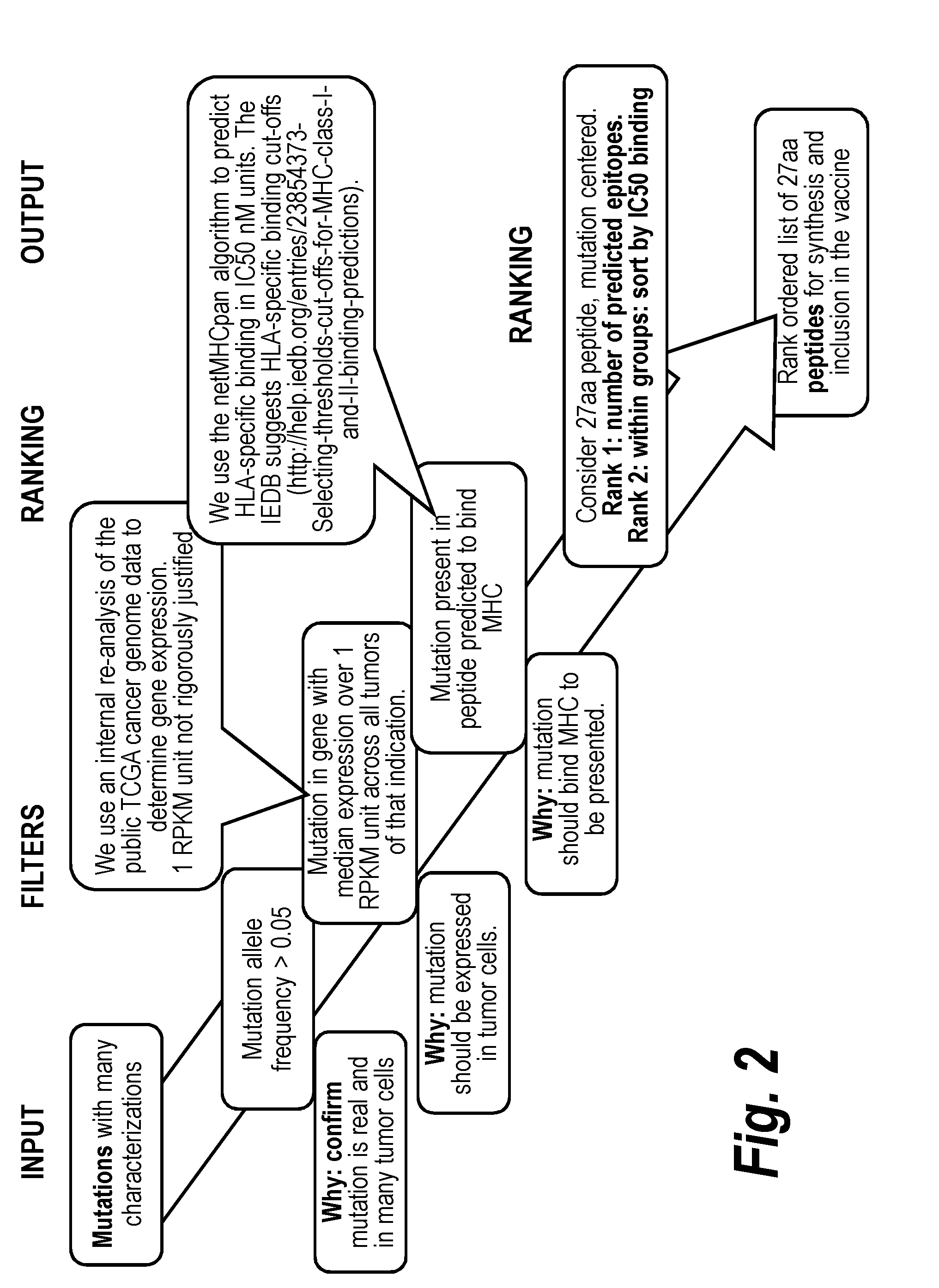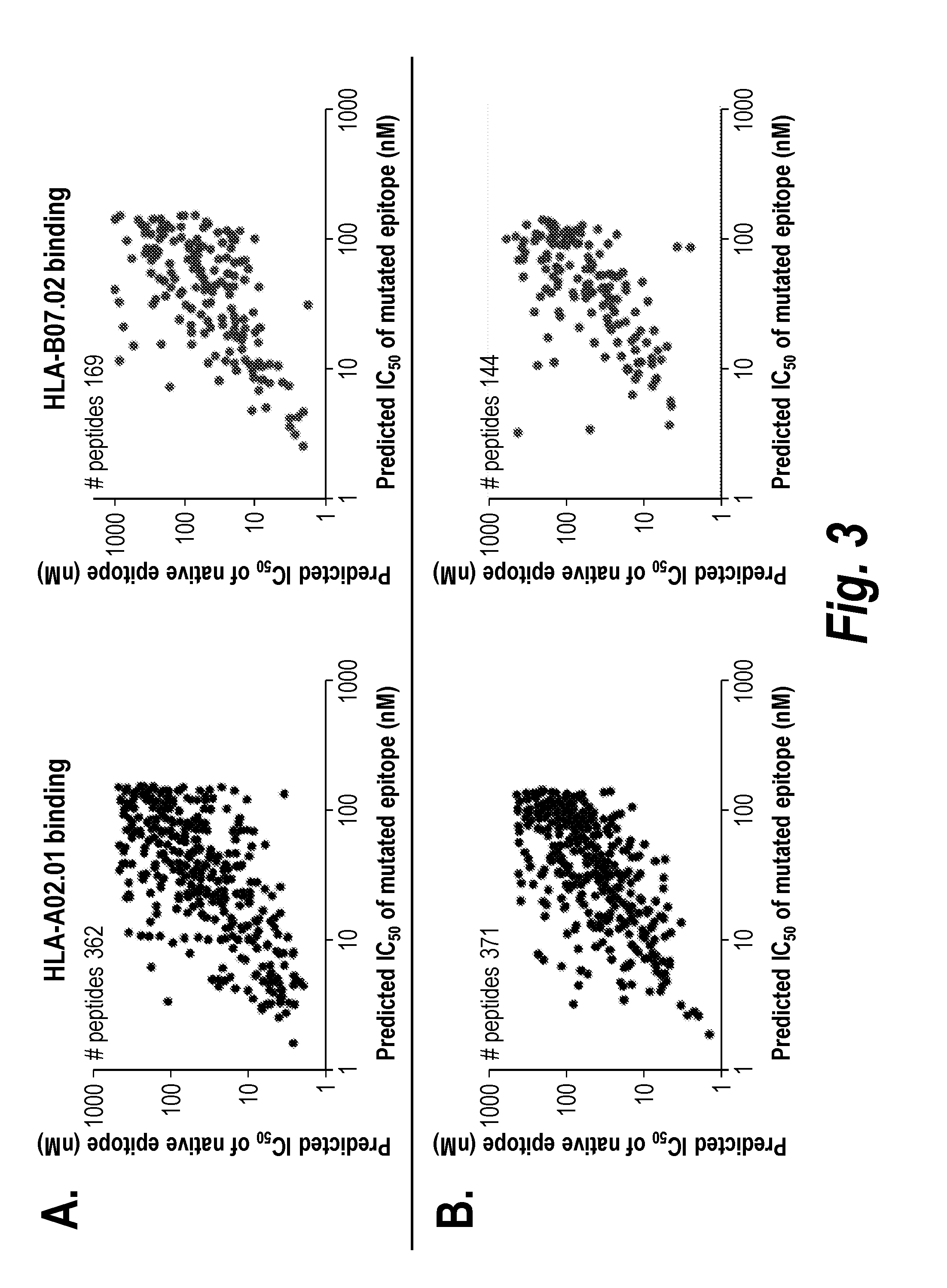Vaccines for treatment and prevention of cancer
a cancer and vaccine technology, applied in the field of cancer biology, can solve the problem of limited generation of such cancer vaccines
- Summary
- Abstract
- Description
- Claims
- Application Information
AI Technical Summary
Benefits of technology
Problems solved by technology
Method used
Image
Examples
example 1
Identification of Somatic Mutations in Banked Human Multiple Myeloma (MM) Plasma Cell Samples
[0368]Based on previously annotated RNA and whole exome-sequencing (WES) of over fifty
[0369]MM samples stored in Mount Sinai Medical Center's Hematological Malignancies Tissue Bank (Miami Beach, Fl.), we have generated lists of non-synonymous mutations for 19 samples. The mutations are computationally characterized, and up to 48 peptides for each of 10 samples are synthesized for testing in immunological assays.
example 2
Somatic Mutations Identified in Murine MM Tumor Cell Line
[0370]We profiled the exome of the immediately available MOPC315, the parental line to MOPC315.BM. Similar to our studies of B16F10 (962 non-synonymous mutations) and CT26 (1,688) and published studies of MC-38 (4,285) and TRAMP-C1 (949), we identified 1,764 non-synonymous somatic point mutations (SNVs) relative to the BALB / c genome. These SNVs occur in 1,539 genes (Cancer research. Mar. 1 2012; 72(5):1081-1091; Nature. Nov. 27 2014; 515(7528):572-576; BMC genomics. 2014; 15:190, each of which is incorporated herein by reference in its entirety). We calculated the potential immunogenicity of MOPC315 mutation-containing peptides. We then applied three filters to identify neo-epitopes that contain features reported to be predictive of immunogenicity or tumor control. These filters were (i) point mutation in the neo-epitope located at position (P3-P7) which is accessible to the T cell receptor as described by Mellman and colleagu...
example 3
PBMCs of MM Patients Contain T Cells that Recognize Predicted Neo-Epitopes
[0371]PBMCs of un-vaccinated MM patients are demonstrated to contain T cells that recognize neo-epitopes identified by next generation sequencing. This demonstration establishes the extent of the mutated tumor antigen recognition at “baseline,” setting the stage for Phase 1 clinical testing of (a) vaccine-driven increase in frequency of T cells specific for the various predicted neo-epitopes compared to pre-vaccination baselines and (b) vaccine-driven induction of responses to antigens not recognized at baseline. Peptides containing putative mutated epitopes can be pooled and used to stimulate CD4 and CD8 T cells independently, following processing into naturally selected epitopes by CD4 / CD8-depleted PBMC, without the need to predefine alleles of HLA restriction (J. Immunol. Feb. 1 2003; 170(3):1191-1196, incorporated herein by reference in its entirety). Both professional and non-professional antigen presenti...
PUM
| Property | Measurement | Unit |
|---|---|---|
| wet weight | aaaaa | aaaaa |
| pH | aaaaa | aaaaa |
| pH | aaaaa | aaaaa |
Abstract
Description
Claims
Application Information
 Login to View More
Login to View More - R&D
- Intellectual Property
- Life Sciences
- Materials
- Tech Scout
- Unparalleled Data Quality
- Higher Quality Content
- 60% Fewer Hallucinations
Browse by: Latest US Patents, China's latest patents, Technical Efficacy Thesaurus, Application Domain, Technology Topic, Popular Technical Reports.
© 2025 PatSnap. All rights reserved.Legal|Privacy policy|Modern Slavery Act Transparency Statement|Sitemap|About US| Contact US: help@patsnap.com



